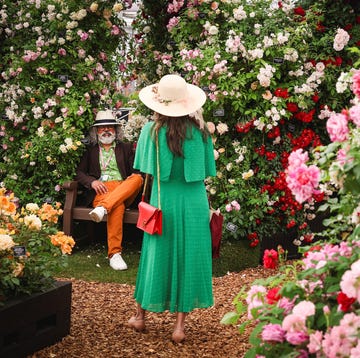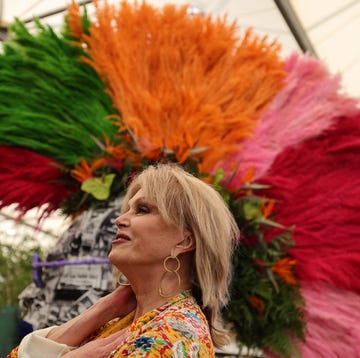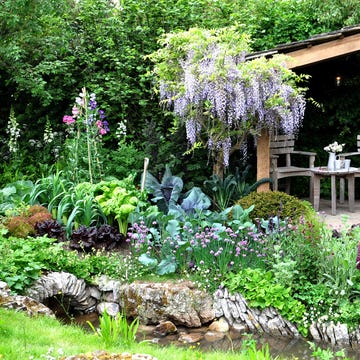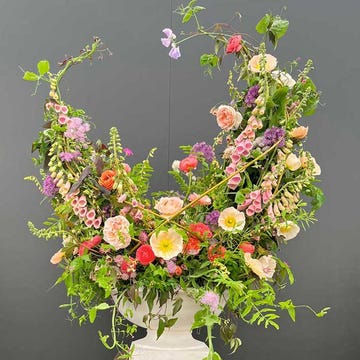There’s something intrinsically romantic about climbing plants; an archway of roses welcoming you home; a fringe of honeysuckle draped over the wall of a cottage. But while climbers might look effortlessly picturesque, deciding which ones to choose for your own garden can be a thornier quest. What do you do if you have a very shady spot, for example? Or if you want to train something to rise up into a bare-looking tree, rather than a straight-forward wall?
To solve all your climber queries, we spoke to gold-winning Chelsea Flower Show designer Joe Carey, who co-designs with his wife, Laura at Carey Garden Design Studio - and climbing plants hold a special place in their memories. ‘We had a grape vine in our first house which we really loved,’ says Joe. ‘It grew on a south facing slope and was covered with grapes which we enjoyed sharing with the birds.’
He also has a helpful tip to help climbers thrive in your space right from the start. ‘Water climbers really deeply after planting; it is important that their roots reach deep into the ground to help them survive dry spells,’ he says. ‘Watering them deeply will encourage their roots to grow down to access this water.
Best climbing plants
Here, Joe shares his pick of the best climbing plants to choose from for different locations - and one it might be best to avoid…
What to read next
Common Honeysuckle (Lonicera periclymenum)
Looking for something which grows well in the UK and is easy to care for? Joe recommends honeysuckle: ‘As a UK native, common honeysuckle is really well suited to UK gardens, and we love it; it has such a wonderful scent.’
Climbing Hydrangeas (Hydrangea anomala subsp. Petiolaris)
If you have a shady garden or a north facing wall you’re looking to add a bit of interest to, then climbing hydrangeas could be the answer. ‘They’re beautiful when in flower in summer and the seed heads also have a lovely quality to them well into autumn,’ says Joe. If you have chalky soil, however, this one isn’t ideal. Otherwise, 'choose a planting spot that has plenty of room as they will grow to a good size.’
Clematis
Do you have a sun trap which turns most plants into a shrivelled heap? Look to varieties of clematis, which Joe says ‘thrive in sunny locations if their roots are offered a little shade.’ He and Laura like clematis 'Frances Rivis' and clematis cirrhosa var. balearica, but there are range of options depending on your preferred colour, shape and size. ‘Pair a spring flowering variety with a summer flowering variety for a longer display,’ Joe recommends.
Climbing roses (Rosa 'Wedding Day')
Roses are the perfect addition to your space for that English country garden feel. ‘There’s something so wonderful and romantic about roses,’ says Joe, who singles out the Rosa 'Wedding Day' as a favourite. ‘I prefer the single flowers because they look more like our native roses and bees can access the pollen more easily.’ If you have a larger space to fill or are looking to get the rose to climb up into a tree, Joe recommends looking out for a ‘rambling’ rather than ‘climbing’ rose variety.
Star Jasmine (Trachelospermum jasminoides)
If you prefer a leafier climber, Star Jasmine could be the perfect pick as it offers evergreen foilage as well as summer flowers. The blooms ‘fill the air with a sweet scent’ says Joe, adding that it ‘thrives in a sunny location and will grow quickly.’
And one to avoid...
Of course, there are some climbers can be a little more tricky to manage than others, as they can quickly dominate other plants. ‘Ivy can be one of the worst offenders when planted in the wrong place,’ says Joe. ‘Some climbers can be very vigorous and smother a space quite quickly. Just be careful to choose a climber that's the right size for the space you have, and you'll be fine.’



















